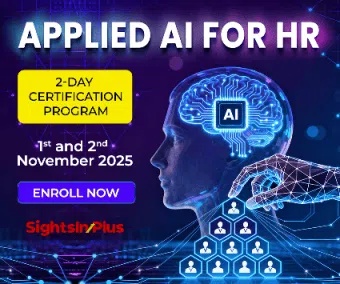5 Performance Appraisal Methods For Modern Workforce
Organizations after navigating through the COVID-19 pandemic are now in a skirmish to settle, consolidate and redefine the various processes which need call of time to rethink and redesign including its’ performance management system. Pre covid metrics appear no longer fit for the purpose. As we are entering into the post-COVID era the biggest challenge for the organization is how to carry out its’ performance management process with minimum changes to suit the changed situation.
Possibly, more than ever before, the PMS now needs to be more customized because of the new evolved nature of working. The need of the hour when we talk about performance management is all about trust and accountability and to ensure that the PMS exercise is an effective performance conversation engagement so that the employees feel valued which in turn adds to their motivation and emotionally connect with the organization. Therefore-
“To prevent performance appraisals from becoming nothing more than an empty buzzword, HR managers need to revamp their existing process with a larger focus and emphasis on periodic performance feedback with the employees in order to keep them engaged and productive in a hybrid working environment.”
In order to do the same, it may be worthwhile to consider any of the following performance appraisal tools depending on the organizational maturity, culture and the people process robustness.
Management by Objective (MBO)
In this method, managers and employees together identify, plan and communicate shared SMART (specific, measurable, achievable, realistic, and time-sensitive) objectives to focus on for a specific appraisal period which in today’s’ world should ideally be quarterly/half-yearly. In a hybrid working environment (“Phygital”- Physical + Digital) it is becoming imperative to engage with employees in objective driven performance conversation. Going forward, annual performance appraisal exercise would only be a culmination of periodic discussions to develop the road map for the future based on present performance data.
Over regular touchpoint meetings, the manager and employee discuss the progress made. The employer can use these measures of progress as a guide to measuring the contribution level of the employee.
Behaviourally Anchored Rating Scale (BARS)
Behaviourally Anchored Rating Scales are designed to bring the benefits of both qualitative and quantitative data to the employee appraisal process. BARS compare an individual’s performance against specific examples of behaviour anchored to numerical ratings. Each performance level on a BAR scale is anchored by multiple BARS statements which describe common behaviours that an employee routinely exhibits. These statements act as a yardstick to measure an individual’s performance against predetermined standards that are applicable to their role and job level. The BRS techniques focus on how the goal has been achieved. It assumes that if desired behavioural anchors are demonstrated the desired outcomes are inevitable.
BARS succeeds in providing clear standards, improving feedback, and providing accurate performance analysis and consistent evaluation. The modern workforce is more focused on knowledge on how to improve on their performances rather than mere outcome of their efforts.
Forced Distribution Method
This is the most widely used method for evaluating the performance method, which can still be applied in post covid era for the modern workforce depending on the maturity and the people process readiness of the organization. The prime objective of this method is to eliminate the central tendency of rating most of the employees at a higher end of the scale. This method assumes the performance distribution will take shape of a typical bell curve.
This is useful for rating a large number of employees. The advantage of this method is it reduces biases. It takes the form of a Bell-Curve wherein the performance ratings are distributed across a pre-determined percentage levels .Though this method has been widely criticised by many across the spectrum of organizations worldwide, but it will continue to remain operative since the availability of any other more objective quantifiable assessment approach is still to evolve.
Critical Incident Method
Though this method of appraisal not new but this method can still be very effectively used in the modern workforce. In this method, the employer typically evaluates an employee on certain ‘critical incidents’ in which the employee either succeeds or falls short of it. Throughout the process, the evaluator maintains a digital or physical journal in which they store the information from the different incidents.
This process is useful for the individual growth of employees. By keeping detailed records of both the positive and opportunity area milestones of an employee’s career trajectory, employers can record detailed information in their feedback, improving the chances of development in the future. These metrics can be readily reviewed during the scheduled progress / 1:1 meeting.
Human-Resource (Cost) Accounting Method
Some may find this method a little harsh, and it may be a convenient appraisal method for others. This method evaluates the employees’ performance from the monetary output an organization yields from their input. This is ascertained by analysing the cost involved in retaining the employees with the benefits an organization yields from their inputs. When an employee’s performance is evaluated based on cost accounting methods, factors like unit-wise average service value, quality, overhead cost are taken into account. Its high-dependency on the cost and benefit analysis and the memory power of the reviewer is the drawback of human resources accounting method.
It is generally ideal for start-ups and small businesses where the performance of one employee can make or break the organization’s success.
Choosing the right performance appraisal method is more critical than ever since it reflects what you think of your employees, how much you care about employee morale and what emphasis the company gives on employee engagement. Once you’ve found an ideal performance review method for your needs, the next step is implementing it properly to eliminate critical performance gaps and address pressing issues.



